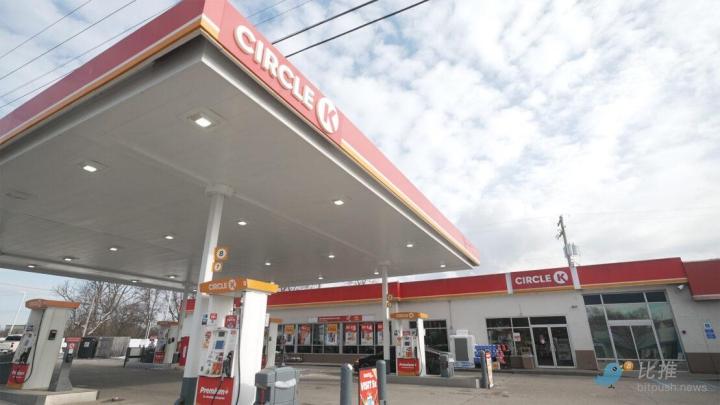On March 7, Wormhole, a cross-chain protocol valued at US$2.5 billion, announced that it would issue token W and promised to airdrop 617 million tokens to past users, accounting for 6% of the total supply. Nearly 400,000 wallets will Will receive airdrops.
Born out of a hackathon and launched in October 2020 by blockchain infrastructure company Certus One, Wormhole initially took the form of a direct token bridge between the Ethereum and Solana ecosystems. Developers within Jump Crypto launched the second version of the protocol in August 2021, utilizing a network of Proof-of-Authority (PoA) guardians as oracles and a network of permissionless relays to transmit messages across chains .
As a decentralized cross-chain protocol, Wormhole integrates smart contracts and encryption technology to achieve seamless cross-chain transmission of assets and data while ensuring the safety and reliability of the process. Through Wormhole, users can easily transfer assets; developers gain a broader space for innovation and promote blockchain ecosystem expansion suites and industry applications.
In November last year, Wormhole completed US$225 million in financing at a valuation of US$2.5 billion, becoming a unicorn in the blockchain industry.
Recently, ChainCatcher conducted an exclusive interview with Dan Reecer, Chief Operating Officer of Wormhole Foundation, to reveal the mystery of Wormhole.
Dan Reecer graduated from the top business school in the United States - Indiana University Kelley School of Business. After accumulating four years of experience in the field of medical and health brand marketing, he devoted himself to the field of encryption and has been deeply involved in the field of cryptocurrency for more than five years. He once served as the chief executive of Acala. Growth Officer, Wanchain Marketing Director, and led the growth project of Web3 Foundation, and also made important contributions to the launch of Polkadot. Dan Reecer joined the Wormhole Foundation in 2023 and continues to invest in the exploration and practice of encryption projects.
In addition to announcing airdrops and other matters, Wormhole has also made new moves in promoting the adoption of zero-knowledge proof (ZK) technology. After funding Lurk Lab and Zpoken, on February 15, the Wormhole Foundation announced its cooperation with the Succinct team to build an Ethereum ZK light client, aiming to decentralize message verification, reduce platform trust, and improve cross-chain composability and networking. road safety.
In addition, in terms of hardware resources, Wormhole has cooperated with AMD, which provides enterprise-level FPGA hardware accelerators to support the development of the Wormhole ecosystem.
From hackathon project to $2.5 billion valuation
ChainCatcher: Wormhole evolved from a two-way token bridge between Ethereum and Solana into a universal messaging protocol that connects multiple chains in the ecosystem. So how did Wormhole gradually grow from a hackathon project to what it is now? Wormhole protocol?
Dan Reecer: Wormhole has continuously made breakthroughs in the cross-chain field since the launch of the foundation-funded project. In 2020, in order to break the isolation between Solana and other mainstream networks, the Wormhole team developed the first version and successfully held the first Wormhole Hackathon, which involved the cooperation of multiple teams and used Wormhole on the blockchain to build cross-chain applications. .
The core goal of the first version of Wormhole is to realize the interconnection between Ethereum and Solana.
Wormhole has made significant progress and now connects over 30 different blockchains. Wormhole recently reached a milestone, with 1 billion cross-chain messages sent through Wormhole.
Currently, more than 200 applications have been built on the Wormhole platform, and thousands of developers use Wormhole to cross-chain every day to enhance the liquidity and user base of their applications.
ChainCatcher: Uniswap has chosen Wormhole as its main cross-chain messaging protocol in its cross-chain deployment. What unique advantages does Wormhole’s cross-chain protocol have compared to other protocols?
Dan Reecer: First of all, Wormhole can cover a wide range of cross-chains, supporting the execution environments of 6 blockchain virtual machines, including Ethereum, Solana, Aptos, NEAR, Sui, and Algorand, and integrating them, which is also the choice of many projects. The reason why Wormhole conducts cross-chain.
Secondly, Wormhole is 100% open source, and all code is public on GitHub. It has been audited multiple times and will be reviewed regularly to ensure safety. Recently, we hired a chief security officer to collaborate with the Asymmetric Research team and work on the security of the entire platform.
In addition, unlike other cross-chain protocols that are usually only controlled by two parties with multiple signatures, Wormhole is highly decentralized.
Wormhole's core organizational structure is based on the PoA (Proof of Authority) mechanism and consists of a group of trusted entities called Guardians. Wormhole's Guardian network consists of 19 members, including Chorus One, Everstake, Figment and xLabs, etc., every message passed through Wormhole must be verified by 13 of these 19 validators before being sent to another blockchain, all of which are currently within the governance system.
In addition, Wormhole pays close attention to developer needs and provides diversified products. Wormhole covers five core products and aims to build a comprehensive interoperability platform rather than being limited to a single product.
For example, Synthetix uses Remote Queries, which allows the extraction of data from any on-chain data source to another blockchain. The product is still in beta.
Uniswap is using Wormhole for cross-chain governance. Wormhole provides Uniswap with cross-chain governance information data transmission services to ensure that it maintains the consistency of governance deployment on various interoperability protocols.
Plan to launch ZK light client
ChainCatcher: Last month, Wormhole announced the ZK roadmap. ZK light client cross-chain infrastructure for multi-chains will be deployed in the next few months. How will the cross-chain infrastructure develop in the future? How do you think these new ZK light clients will change the status quo of the blockchain industry, and how will they drive Wormhole to achieve its long-term goals?
Dan Reecer: The Wormhole team has always adhered to the core spirit of cryptocurrency and is actively working to widely apply zk technology to Wormhole's platform to reduce reliance on centralized factors.
After zk technology is officially launched, developers will have two options to transfer data or tokens and continue to use the existing verifier system; or choose completely trustless zk technology and get rid of dependence on verifiers.
The reason why Wormhole attaches so much importance to zk technology is that it will effectively reduce the Wormhole system's dependence on company trust and further promote decentralized programs. Through continuous technological innovation and optimization, Wormhole will provide developers with a more secure, efficient and decentralized interoperability platform.
Wormhole has funded three teams: Lurk, Zpoken and Succinct. At the same time, it has received hardware support from AMD in FPGA and GPU to optimize zk technology to maximize speed and cost-effectiveness.
Wormhole is expected to launch a zk client this year to achieve seamless interoperability between chains such as Ethereum and NEAR.
ChainCatcher: Will Wormhole launch a dedicated zk layer to manage these zk proofs being transferred between different chains? Or are you planning to choose a specific chain to solve this problem?
Dan Reecer: Wormhole does not require the development of a dedicated zk layer for this purpose. On the contrary, Wormhole is developing a zk-like client that can deploy various technologies on different chains while integrating seamlessly without the need to develop underlying zk solutions like zkSync or Polygon's zk chain.
Although zk is usually used for privacy protection, in the Wormhole scenario, zk is used to reduce centralized trust and enhance decentralization.
Committed to cross-chain ecological construction
ChainCatcher: In December last year, the parallel EVM blockchain Monad and Wormhole announced a partnership and technology integration. Can you give us a detailed introduction to the details of the cooperation between Wormhole and Monad and the impact of this cooperation?
Dan Reecer: Wormhole will attract users and liquidity to Monad and inject vitality into its ecosystem. Users can easily cross-chain SOL from Solana to Monad through Wormhole, and freely participate in any activities of the Monad ecosystem including DeFi. .
For Wormhole, this is not only a challenge, but also an excellent opportunity to expand market share and transaction volume.
ChainCatcher: Will Wormhole expand its coverage of different project types? Or will these projects focus solely on messaging interoperability? Would you consider partnering with a large ecosystem like Optimism or Arbitrum?
Dan Reecer: The current plan remains in the area of interoperability, which is one of the biggest opportunities in the entire industry.
Considering the exponential growth in the number of blockchains and the entire industry, bridging between chains has become crucial. It is undeniable that the world is moving towards a multi-chain environment and a secure and trust-minimized cross-chain facility is needed to drive this expansion and thus promote the prosperity of the industry.
For users, the focus is not limited to the platform itself, but more to cross-chain needs.
Because of this, Wormhole’s focus has always been on building more products and integrating them seamlessly into one set of tools. Currently, Wormhole is actively working closely with application and blockchain developers, as well as cross-chain issuers of tokens, to increase the number of applications covered, further expand the scope of cross-chain or multi-chain tokens, and launch communities Governance, jointly promote the development of cross-chain ecology, and continue to adhere to this path in the next 5 to 10 years.
ChainCatcher: In November last year, Wormhole raised US$225 million at a valuation of US$2.5 billion. What are the plans after this round of financing? In addition, what are the considerations behind the team behind Wormhole announcing the establishment of Wormhole Labs?
Dan Reecer: Wormhole has always put engineering and product at its core. With the development of the Wormhole ecosystem, multiple collaborative teams have gradually formed. Currently, Wormhole has the foundation, Wormhole Labs, X Labs and the security-focused Asymmetric Research team. These four teams form the core strength of Wormhole.
On the developer side, Wormhole has provided various grants at hackathon events such as Denver and Ethereum, and will continue to participate in similar events dedicated to strengthening the developer ecosystem. Additionally, Wormhole focuses on recruiting top talent.
ChainCatcher: Wormhole has launched the cross-chain ecological fund and XGrant funding plan. What are the specific criteria when selecting funding projects? Are there plans to increase the funding amount in the future to support more potential projects?
Dan Reecer: X Grants is specially established for the Wormhole ecosystem open source project. The official website is accompanied by relevant funding standards, and self-service applications will be evaluated and screened by a dedicated team.
Wormhole has also partnered with Borderless Capital to launch a cross-chain ecosystem fund, aiming to invest in project teams that can promote the development of the entire cross-chain ecosystem. These teams have been tightly integrated with Wormhole from the beginning.
Secondly, regarding the Wormhole Base Camp acceleration program operated by Outlier Ventures, which is financially supported by Borderless Capital and focuses on supporting early Web3 founders. Five startups have been selected so far and will receive an investment of US$200,000 from Borderless Capital.
Wormhole has always been committed to supporting the development of the entire cross-chain ecosystem. Whether it will expand the scale of funding requires further research and preparation.
ChainCatcher: As Bitcoin has broken through new highs recently, the crypto market sentiment continues to rise. Affected by this, will Wormhole accelerate the progress and development of some projects?
Dan Reecer: Wormhole has not changed direction due to market fluctuations. Wormhole has been developed for more than 3 years and has gone through market cycles. Wormhole focuses on its goals, releasing new products and improving existing ones.
Market cycles may have caused some stir on social media, but Wormhole remains true to its roots and committed to its mission.








